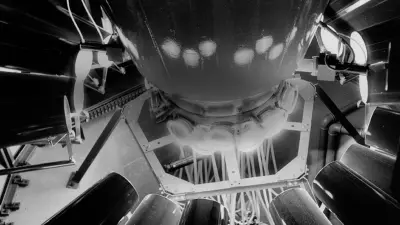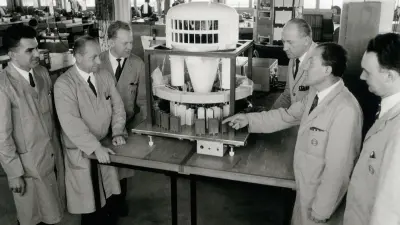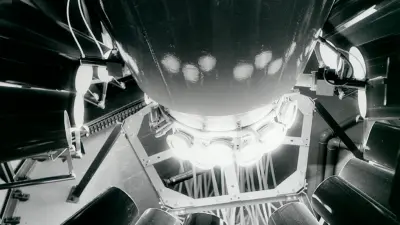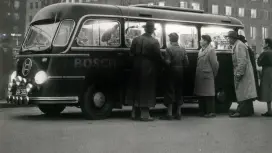Testing for Space
The Bosch Space Simulator

The white steel dome in its red steel frame rises to a height of over ten meters. The research satellite being tested is suspended in this vacuum chamber, which is over six meters in diameter.
Its dome is ringed by countless transformer cabinets and has window inserts. Incredibly bright light from 19 xenon lamps illuminates the satellite with a total power output of 90,000 watts.

This massive installation is a space simulation chamber and a particularly spectacular example of research and development at Bosch. Experts looked for a testing environment in themed-1960ies to test spacecraft and satellites in realistic conditions, i.e. in a vacuum with exposure to direct sunlight. The aim was to reveal any design weaknesses to ensure full functionality once the object was sent to orbit.

In 1966, Bosch engineers debuted the first simulation facility at the Deutsche Versuchsanstalt für Luftfahrt (DVL) near Cologne, Germany.
Between 1966 and 1976, the Technical Research Center in Gerlingen-Schillerhöhe manufactured ten space simulation systems. The final “Bosch Sun” — how their inventors called it — was delivered to the European Space Center in Nordwijk/Netherlands.
Author: Dietrich Kuhlgatz
